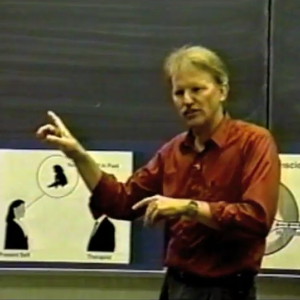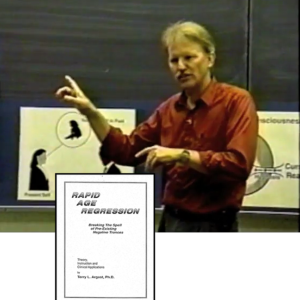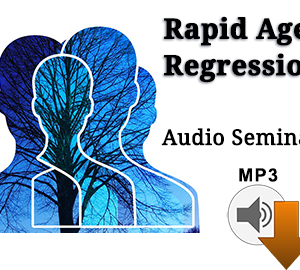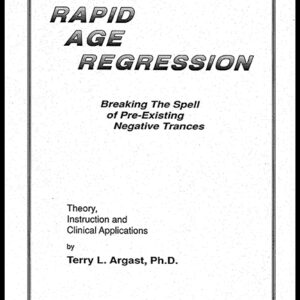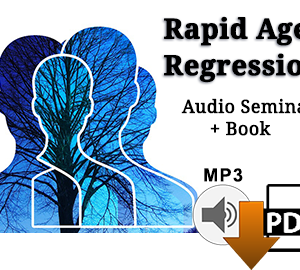Rapid Age Regression
Breaking the Spell of Pre-Existing Negative Trances
by Terry Argast, Ph.D.
Rapid Age Regression is a technique adapted from John Watkins’ Affect Bridge. It can be an effective way to access the unconscious origins of a psychological problem and to provide a basis for therapeutic intervention. It can be utilized with a wide variety of clients who have some intense affect associated with the problem. The focus of the hypnotic induction is this negative affect, utilizing the portal of the pre-existing trance which allows the clinician to address the root cause of the affect at an unconscious level.
In many cases, a simple abreaction or reliving of dissociated or repressed memories is sufficient to provide relief. In other cases, a process of differentiation is necessary to accomplish the therapeutic goals. Often, the simple awareness that the person is in another time or place is adequate to “break the spell” of this isolated affect.
About this Material
The Southern California Society for Ericksonian Psychotherapy and Hypnosis has been formally teaching hypnosis and other therapeutic techniques for many years. As part of our training program, we routinely do demonstrations of the techniques and then have the participants practice these techniques in the workshop and, hopefully, with their clients. The demonstration portion of our training consistently receives the highest rating of what the participants determined that was most useful to their understanding of how to use the procedure.
This material (book, audio and videos) is a collection of seven demonstrations of this technique along with in-depth analysis and explanation of the clinical model and the steps of the technique. Five of these are from demonstrations Dr. Argast conducted during the Society training programs from 1993 and 1994. Two are from actual therapy sessions with clients.
The didactic material is taken from a special workshop conducted in August of 1994. During this workshop, the clinical model was explained in depth to assist in understanding how to use this technique. Each of the seven CD segments was introduced and discussed. When possible, follow-up information about how the experience has impacted the subject has been included. The discussion segments after the demonstrations have been edited, but the actual demonstrations are unedited other than as necessary to protect patient confidentiality.
What is valuable about this material is that it provides the repetition and in-depth analysis that is essential to master a particular clinical approach. This type of study is not available in a workshop setting, whereas this series of book and associated audio and video training allows the clinician an opportunity to study the theory and practical applications of the techniques on a much deeper level.
The book includes the didactic material about the clinical model, the basic steps and elements of the technique, details and issues therapists are likely to encounter when they use this approach, then a transcription of the dialogue of each demonstration complete with an analysis of what is going on and an explanation of the intervention.
Since it is impossible to fully understand how the technique is used and how individuals respond to it from the written material alone, we are also providing audio and video resources so that the clinician can not only study the theory, but also experience the nuances and tone of actual interventions.

